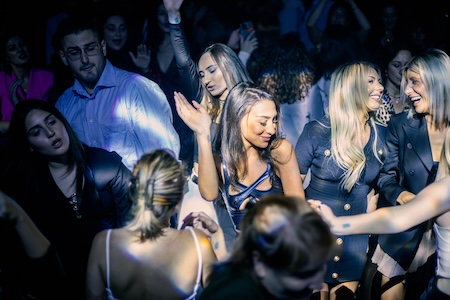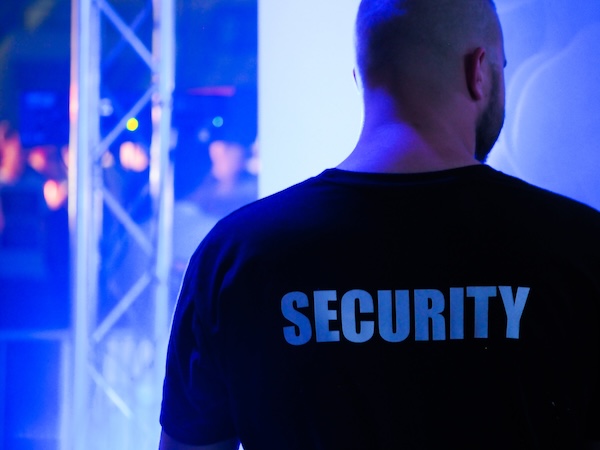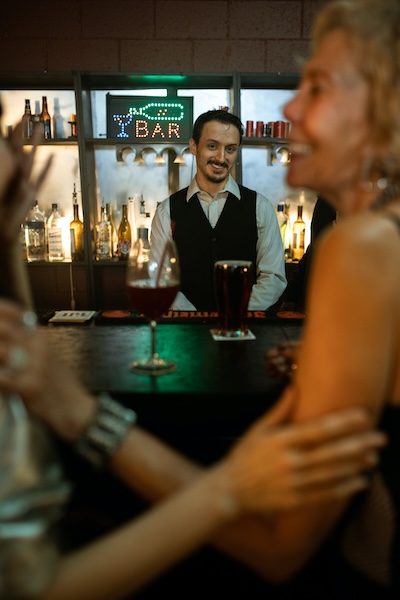
Understanding nightclub safety issues is part of the job of managing or owning this type of venue. Prioritizing safety should always be the primary focus of clubs or nightclubs. The entertainment and atmosphere they provide allow their patrons to enjoy their friends, dance the night away, and relieve their stress. Behinds the scene, club managers and owners work hard to create a vibrant, but safe atmosphere.
The following issues are common to nightclubs, but any venue can learn from the measures they use to keep patrons, entertainers, and staff safe. As you will see, nightclub safety is a multi-faceted task that requires attention to detail and proactive measures. These strategies aren’t just about maintaining order—they also contribute to the overall experience of your patrons. A well-managed club is a more enjoyable one, leading to repeat customers and positive word-of-mouth.
This is a critical concern of any venue packed with people enjoying the evening. Fortunately, local governments have fire safety requirements that clubs must adhere to get and keep their business license. While inspections by fire marshals is how governments enforce such codes, it’s up to those who own and operate nightclubs to ensure that the club is equipped with fire extinguishers, fire exits are clearly marked and unobstructed, and staff are trained in emergency procedures. We’ve all seen the consequences when fire exits are obstructed or even locked, preventing people from escaping and causing more injuries as people crush against the obstructed exit.
Fires in nightclubs have proven to be some of the most deadly when the proper features, systems, and construction materials were not present(source). Nightclubs, theaters, and auditoriums differ from office buildings because they contain a large number of people in one main space. The level of safety provided is not the result of any single safety system or feature, but rather is achieved through the combination of multiple safeguards that are provided.

Just as with fire regulations, nightclubs are issued an occupancy permit that stipulates the maximum number of people allowed in the club at any one time. Having too many people packed in too tightly can be a recipe for disaster. Overcrowding can quickly turn a night of fun into chaos and can lead to all sorts of issues, from minor altercations escalating into full-blown fights or worse, potential stampedes. “Too much” doesn’t only apply when talking about tequila shots—it’s also relevant when considering crowd size. Adhering to the venue’s maximum capacity to prevent overcrowding requires proactive crowd management techniques. Remember that crowd management isn’t about limiting fun—it’s about ensuring every patron has enough space to enjoy their night out without feeling like they’re in a can of sardines.
Techniques for Effective Crowd Management: Here are some crowd control strategies that can be used to prevent overcrowding:
But remember. It’s not just what happens inside that counts—you need eyes outside too. Your security team should keep a close watch on lines to prevent unruly behavior or excessive crowding in entrances and exits.
Security staff are charged with maintaining order inside clubs and creating an environment where people feel secure enough to let loose and enjoy themselves. It’s everyone’s job to act as an integral part of keeping everyone safe and provide a sense of security within your establishment. Having sufficient staff numbers gives them time to spot trouble before it escalates into something more serious—preventing incidents rather than reacting after-the-fact.

What is the optimal number of staff needed for such a role? The answer depends on factors such as crowd size, event type, and club layout. Too many bodies can intimidate patrons while too few might fail at maintaining control during peak hours. A small venue may only need one or two security people, but scale it up to a nightclub with multiple rooms and levels? You’ll need to have more personnel on the scene. Consider the rule-of-thumb ratio: One security person per 100 patrons for nightclubs should suffice under normal circumstances. However, if hosting an especially large event or expecting rowdy crowds due to specific performers or themes, it might warrant increasing this ratio significantly.
While bouncers may be a part of nightclub security personnel, they are private employees and do not have the same rights as the police or actual security personnel. That means that bouncers do not have the right to physically remove a person from the premises of the club. They are also restrained on engaging in any acts of violence or force. What they can do is (source):
But remember. Quality always trumps quantity when it comes down to choosing between fewer highly trained individuals versus numerous inexperienced ones.
To do their job effectively though, they need proper training—a crash course won’t cut it here. They should know how best handle various situations that may arise during operations—from crowd control techniques, conflict resolution skills, down to identifying signs of excessive intoxication among guests. They should be trained not just to restrain or remove unruly guests, but to defuse tensions and de-escalate arguments.
In this business, you shouldn’t believe in learning on the job when it comes to security staff training. These individuals need rigorous preparation beforehand, so they’re equipped to handle potential issues efficiently and effectively. This includes identifying signs of trouble related to excessive alcohol consumption—because no one wants their night ruined by someone who can’t hold their liquor.
Having well-trained security staff is non-negotiable. They need to be prepared for anything, from handling unruly patrons to responding swiftly during emergencies.
Nightclub security training programs often provide comprehensive modules on conflict resolution, crowd control techniques, and first aid application. This ensures that your team can handle any potential issues with professionalism and poise.
Using trained and certified security staff is always the best choice when it comes to providing a safe environment for nightclub patrons.
Good lighting both inside and outside the club can prevent accidents and deter crime. Proper illumination isn’t just for ambiance—it plays a crucial role in keeping everyone safe. Good lighting, especially around sidewalks and parking lots outside the club, helps prevent accidents caused by tripping or stumbling over unseen obstacles.
A well-lit exterior also enhances your club’s image. It signals that you prioritize patron safety above all else—a major draw for responsible partygoers looking to have fun without unnecessary risks.
It’s also critical that all exits be illuminated as well. There should be enough lighting to allow people to find their way to any exit during an emergency.
One often overlooked aspect of nightclub safety is the physical condition of the club both inside and outside as well as placement and condition of equipment. In any nightclub setting, it’s critical to regularly check all fixtures, furniture, sound systems, lighting setups, potential tripping surfaces, – you name it. This not only helps spot potential hazards but also ensures everything runs smoothly for a killer night out.
Maintenance extends beyond fixing things when they break. It means making sure your club and gear is at its best before anything goes wrong. Proactive maintenance checks, like looking for wear and tear or testing stability, can make all the difference between an unforgettable show or a catastrophic mishap. Having up-to-date, well-maintained equipment can significantly reduce the risk of accidents and injuries.
Problems can also arise outside if good lighting is not in place. Sidewalks and parking areas should be well-lit and free of damage Therefore, investing in quality lighting fixtures and regular maintenance is a small price to pay when considering the potential cost of negligence – both financial and reputational.

Picture a typical night at the club: music blaring, lights flashing, and drinks flowing. It’s all fun until someone has one too many. That’s where alcohol consumption monitoring comes into play. Monitoring the amount of alcohol consumed by each patron is imperative. If someone has too many, they could become a risk. Serving an already drunk patron can lead to fights and falls.
Your bartenders aren’t just there to serve up fancy cocktails—they’re also the first line of defense when it comes to identifying patrons who may be overdoing it with their drink orders. And let’s not forget about security teams; they’ve got an eagle eye out for signs of trouble related to excessive drinking.
This is why training these key staff members is so important—it can help prevent fights and accidents before they even start. But how exactly do you go about doing this?
You start by teaching your team what intoxication looks like. We’re talking slurred speech, unsteady movement—you know, classic tell-tale signs that someone might have had too much.
The next step? Role-play scenarios with your team so they get hands-on experience handling different situations involving intoxicated customers. You’ll be surprised at how quickly things escalate when people are under the influence—so getting some practice in beforehand can make a world of difference during actual encounters.
These are all situations that could come up any given night—and ones your team should feel confident handling.
But remember, training is not a one-and-done deal. Regular refresher sessions are essential to maintain proficiency and stay current with any new developments that may have occurred since the last session. Offering recurrent training opportunities gives the opportunity to tackle any fresh problems that have come up since the last lesson.
Want a pro-tip? Make sure your team gets TIPS-certified in responsible alcohol service. You can find more info on their website.
Keeping patrons, staff, and entertainers safe is a key role of any venue. There are things that venue owners and operators can do to help ensure a safe place while providing the kind of atmosphere that those who frequent clubs are seeking. One doesn’t need to compromise the things people enjoy, such as heart-thumping music, pulsating lights and dancing the night away.
In fact, adhering to fire safety protocols, managing crowd size and flow, good lighting, good maintenance, and a trained staff contribute to a feeling of safety among those in the club. Having enough trained and qualified security personnel is extremely important to handle issues such as overindulgence with alcohol, preventing sexual assaults, dealing with underage people at the door, fighting and other aggressive behaviors. They can deescalate a situation a prevent a more serious incident. In the event of a critical incident such as a fire or active shooter, having these measures in place can save lives.